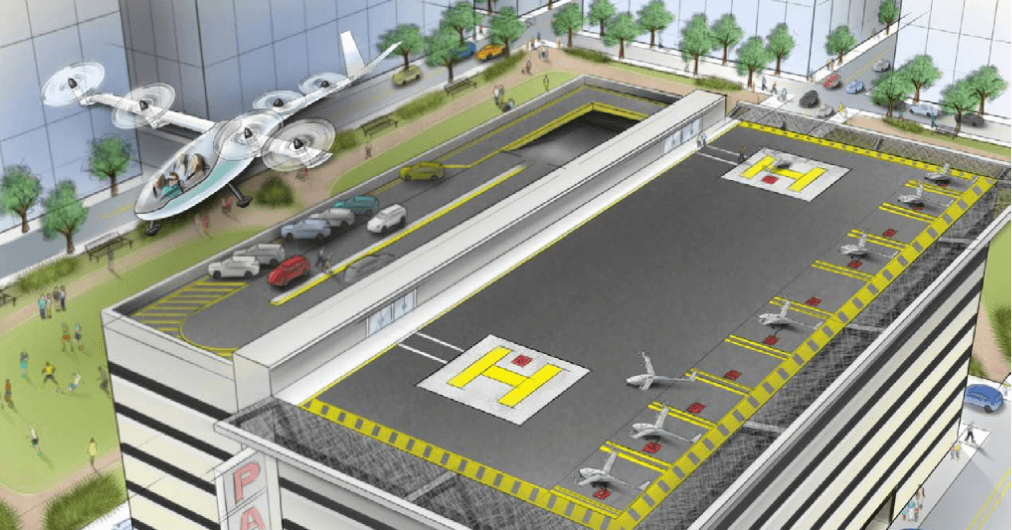A new aviation startup is launching out of stealth today with plans to facilitate a U.S. regional hybrid-electric aircraft network by the beginning of the next decade.
Founded out of Kirkland, Washington in 2013, Zunum Aero is striving to “take aviation into the future” with 10-50 seat aircraft that use thousands of quieter regional airports to transport people up to 700 miles starting from the early 2020s. The company says it expects to increase the range to 1,000 miles by 2030.
In a nutshell, Zunum Aero is looking to better utilize underused airport inventory. Currently more than 95 percent of all U.S. air traffic emanates from only 2 percent of the country’s 5,000 airports.
The long-term aim of Zunum Aero is to build a regional electric air network, offering travelers a 40 percent decrease in door-to-door travel time by using a smattering of local airports, while also promising 80 percent lower emissions. Additionally, the company says it has lower in-house operating costs, which will mean up to 80 percent cheaper fares.
June 5th: The AI Audit in NYC
Join us next week in NYC to engage with top executive leaders, delving into strategies for auditing AI models to ensure fairness, optimal performance, and ethical compliance across diverse organizations. Secure your attendance for this exclusive invite-only event.

Above: Zunum aircraft
The model that Zunum Aero is working on is more or less designed to replicate that of bus travel — “walk-on, walk-off” aircraft that don’t require a 2.5 hour journey to the nearest major airport. By way of example, passengers can expect to travel from regional airports in the Boston area to Washington, DC for “half the fare and in half the time it takes today door-to-door,” according to a statement issued by the company.
“The shift of the industry to large aircraft and long ranges driven by gas turbines has concentrated almost all air traffic to just two percent of our airports, creating a massive transport gap over regional distances where there is no high-speed alternative,” said Zunum Aero cofounder and CEO Ashish Kumar. “As a result, door-to-door times for most journeys are no better than they were 50 years ago. Hybrid propulsion is an industry-changing solution, enabling mid-sized aircraft on regional routes to have better cost efficiencies than airliners.”
Zunum Aero hasn’t revealed how much financial backing it has, but it says that both Boeing and JetBlue, via its JetBlue Technology Ventures subsidiary, have invested in the company.
“Boeing is investing in Zunum because we feel its technology development is leading this emerging and exciting hybrid-electric market space,” explained Steve Nordlund, VP of strategy at Boeing. “This technology and customer approach has the potential to transform the market for small, short-haul aircraft that can use smaller regional airports.”
Who needs roads?
Though autonomous cars and electric road-faring vehicles have been grabbing most of the transport-related tech headlines of late, there has also been a quiet surge in innovations across the aviation realm too.
Earlier this year, Airbus confirmed plans to test a prototype of a self-piloted flying car by the end of 2017, as it looks to invest in solving the growing gridlock on city roads. This followed shortly after fledgling startup Lilium Aviation announcing a $10.7 million funding round for its vertical take-off and landing jet. Elsewhere, Massachusetts-based Terrafugia has been developing working prototypes of roadable aircraft for more than a decade, and it recently received approval from the Federal Aviation Administration (FAA) that paves the way for it to get unmanned passenger vehicles in the skies by 2018.
Keen not to be left behind in any transport-related advances, Uber recently released a whitepaper that considers a time when on-demand urban air transportation is commonplace, with networks of small electric aircraft taking off and landing vertically, bypassing the need for airports at all and opening up routes between cities and suburbs.
“On-demand aviation has the potential to radically improve urban mobility, giving people back time lost in their daily commutes,” the paper reads. “Just as skyscrapers allowed cities to use limited land more efficiently, urban air transportation will use three-dimensional airspace to alleviate transportation congestion on the ground.”

Above: Uber’s fantastical future vision
Google cofounder Larry Page is backing not one, but two secret flying car startups: Zee was founded in 2010 with a view toward “designing, building, and testing better ways to get from A to B,” as the blurb on the company’s homepage states. It’s currently working on a “small, all-electric plane that could take off and land vertically,” according to a Bloomberg report.
Page is also reportedly backing a second secret flying car startup called Kitty Hawk, which is based just a stone’s throw from Zee in Silicon Valley.
Zunum Aero has been working with the FAA since 2014 as it looks to help push through certification standards for electric aircraft, an outcome that’s expected next year. And it anticipates that its first aircraft will hit the market in around 2020.

